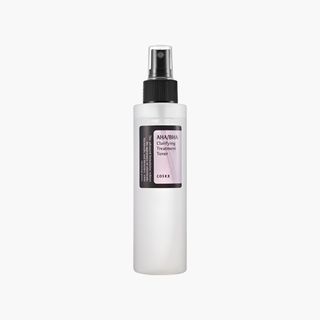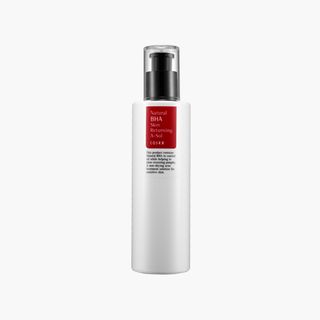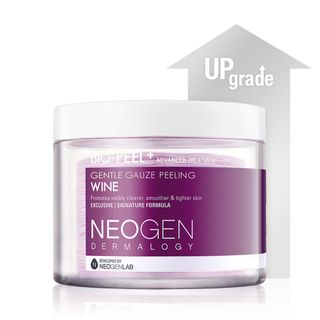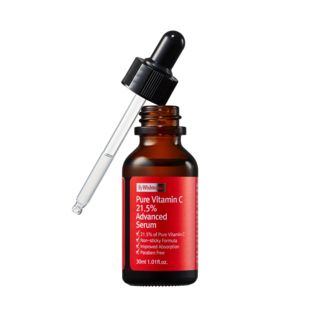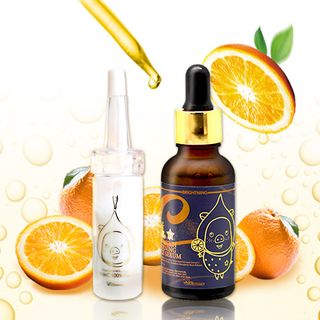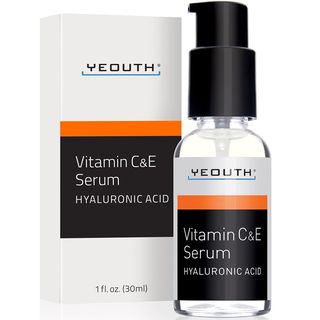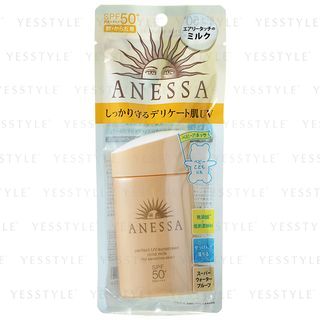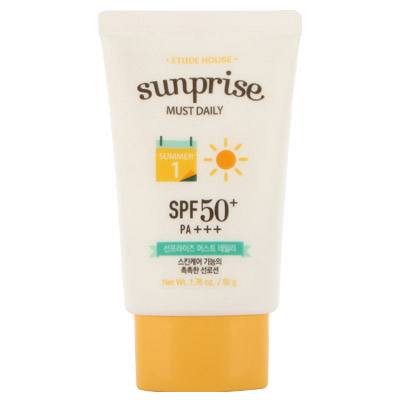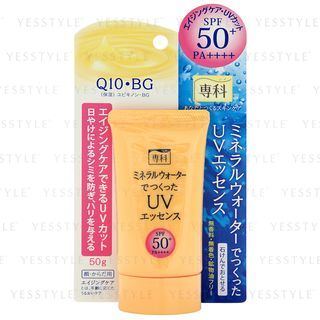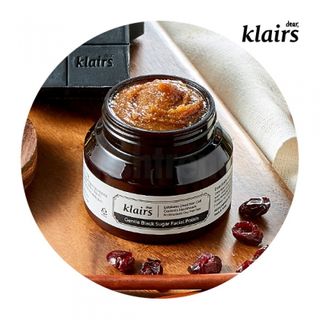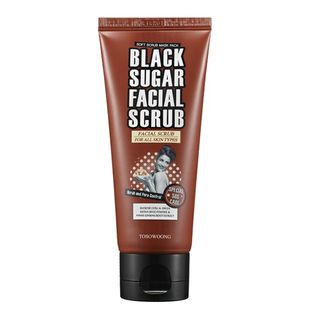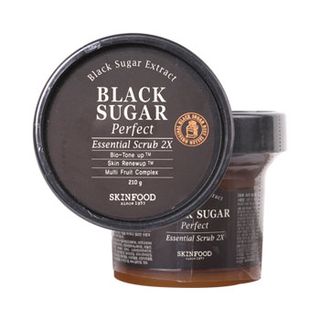Having acne isn’t pretty and can sometimes be painful. But just when you think it’s all over, you have to deal with the scars they leave behind. Acne scars are post-inflammatory hyperpigmentation following a breakout and their main cause is the lack of collagen produced by skin to repair the damaged skin tissue.
“Don’t pick your pimple or it’ll leave a mark” – you’ve probably heard this countless times and yet, the truth is that you can still get a scar even if you refrain from popping that zit. But picking at acne, especially while it’s active, will cause more damage because it triggers more inflammation. It’s not a full solution, but to be safe, it’s best to leave your pimples alone.
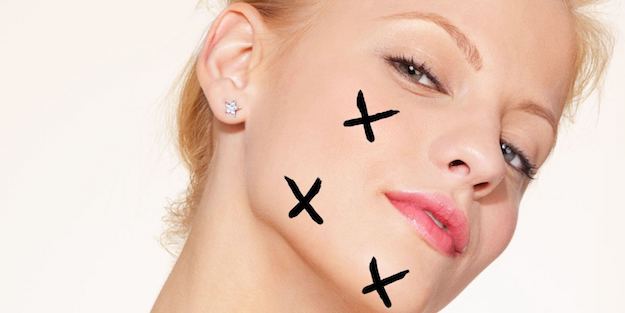
Image: Pinterest
Types of Acne Scars
Every scar is different and it depends on the type of acne you have. Whiteheads and blackheads, which are non-inflammatory, don’t normally leave behind scars and even if they do, they’re easier to get rid of. The enemy you should watch out for is inflammatory acne such as cysts, papules, pustules and nodules. These are more severe as they affect the deeper layers of skin and are therefore more prone to scarring that can take months to fully heal.
Before treating a scar, it’s important to first determine its type. The two most common types of acne scars are:
Hypertrophic Scars
The easiest way to differentiate hypertrophic and atrophic scars is that the former ones are raised while the latter are indented. A hypertrophic scar is thick, raised or bumpy; it develops due to the overproduction of collagen on the affected area of the skin. Yes, it’s possible to have excessive amounts of collagen and having too much of a good thing can be, well, not good.
Atrophic Scars
Atrophic scars are the opposite: They create indents or craters on the skin and are formed due to the lack of collagen available to heal wounds. These types of scars can be classified into three patterns:
• Ice-pick Scars
When your skin loses collagen during the process of healing a blemish, the damaged tissue leaves a scar that resembles a sunken hole on the skin. They’re narrow and deep, and you most likely get these from cystic acne, which is considered the most serious type of acne and develops deep beneath skin.
• Boxcar Scars
These scars typically form from having red and inflamed acne. They appear on the skin as broad scars with sharper edges.
• Rolling Scars
Unlike boxcar scars, rolling scars are described as broad depressions with softer edges – it almost looks as if there are mini valleys on your skin.
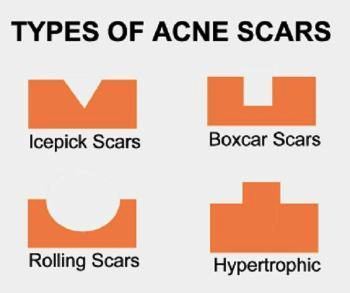
Image: Pinterest
Ways To Get Rid of Acne Scars
Scars don’t vanish overnight. It can take weeks, sometimes even months, for them to go away which can be frustrating. But by incorporating the right treatments, there are ways to tackle them. Here are some treatments that’ll help:
1. Apply Chemical Peels
Chemical peels are a popular treatment option as they involve using products with acids like AHAs and BHAs that help make skin smoother, fade dark spots and fix uneven skin tone. They also help stimulate collagen, which skin heavily relies on during the healing process.
• Alpha Hydroxy Acid (AHA)
Products that contain AHA like glycolic acid are great for unclogging pores and exfoliating the skin’s surface. Glycolic acid helps to remove the layer of dead skin cells, therefore evening out skin tone and revealing a brighter complexion. You can use AHA toners like COSRX’s AHA/BHA Clarifying Treatment Toner which provides gentle exfoliation to help get rid of excess oil and prevent blackheads and whiteheads from forming.
• Beta Hydroxy Acid (BHA)
One of the most common ingredients used to treat acne is salicylic acid. It’s a type of BHA exfoliant that contains both anti-inflammatory and anti-bacterial properties. Salicylic acid can penetrate below the surface of skin to remove dead skin cells that clog pores. Using products with salicylic acid is especially beneficial for blackheads as it allows easier extraction and quicker healing. COSRX carries the Natural BHA Skin Returning A-Sol which is a toner that repairs and hydrates skin while hindering bacterial growth.
• Polydroxy Acids (PHA)
PHAs are the newest type of acid that are similar to AHAs but less irritating. This type of acid is known to attract moisture to skin to prevent moisture loss along with providing anti-inflammatory benefits. You can find this formula in facial pads including NEOGEN’s Dermalogy Bio-peel Gentle Gauze Peeling Wine, a triple layered gauze pad that gently exfoliates skin.
2. Incorporate Vitamin C Products into Your Skin Care Routine
There are plenty of ways that our skin benefits from Vitamin C and it plays an important role in treating acne scars or marks. Vitamin C reduces inflammation, stimulates collagen production and is also an antioxidant that fights against free radicals that damage skin.
If you’re looking for a product that helps fade dark spots, check out By Wishtrend’s bestselling Pure Vitamin C Advanced Serum. It’s paraben-free and formulated with 21.5% Vitamin C. With regular use, you’ll find that it brightens and helps even out your complexion.
3. Wear Sunscreen Daily
When shopping for sunscreen, look for one that contains zinc oxide. This natural mineral ingredient offers added protection and acts as a shield against the sun’s UV rays. Zinc oxide also prevents bacterial infection and minimizes skin inflammation. Exposing your skin to the sun without sunscreen will dry it out and destroy its collagen and elastin, which are the building blocks of healthy skin as well as the two main components you need to heal scars. If you’re interested in trying a sunscreen with zinc oxide, you can go for Shiseido’s Anessa Perfect UV Sunscreen Mild Milk (For Sensitive Skin) SPF 50+ PA ++++.
4. Adding Gentle Exfoliants
If your skin is too sensitive for chemical peels, or you prefer the typical way of exfoliating, you can use gentle facial scrubs such as YesStyle’s bestselling Gentle Black Sugar Facial Polish from Dear, Klairs. This vegan-friendly sugar-based scrub contains natural ingredients like black sugar, shea butter and cranberry oil that don’t irritate sensitive skin. Its formula sloughs off dead skin cells and removes blackheads and whiteheads while also preventing sebum build-up.
Before tackling your scars, try to find the root cause of your acne first in order to prevent new ones from growing, thus lessening the number of scars you’re left to deal with. You also have the option of visiting a dermatologist if your case seems serious or never-ending. Some treatments and products might work for your friend but may not necessarily work for you – and that’s okay, because everybody’s skin reacts and heals differently.
ALSO READ Do You Think Canned Fruit is Healthy?
MORE The Bean Body scrub to reveal your best Winter Skin
First appeared on yesstyle.com


